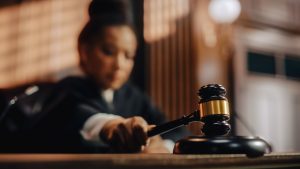
Slip-and-fall accidents can occur under a wide range of very different circumstances.
However, most successful slip-and-fall claims center on similar sets of elements. These elements relate to the facts and circumstances of your accident and help establish whether a property owner or other party should be found liable for your losses.
If, for example, you were seriously injured in a Syracuse business, you will likely be required to prove the following:
- A dangerous condition or hazard existed on the property owner’s premises;
- The property owner breached their duty of care by failing to take reasonable measures to remove the dangerous condition or warn you of its presence;
- The dangerous condition was the cause of your slip-and-fall accident; and
- The accident resulted in certain damages compensable by a New York court.
Since property owners can fall back on many strong defenses, a slip-and-fall claim must typically be underlain by a strong combination of evidence and compelling legal theory.
- The Discovery Process
After your attorney drafts a formal complaint and submits it to the court, summonses will be issued and the defendant will be allowed to respond to the claims.
If no resolution is immediately reached, then your lawsuit will move to discovery.
During discovery, each side will have the opportunity to request, obtain, and assess evidence it believes is critical to understanding both the causes of your slip-and-fall accident and its outcome. Discovery often involves the following processes:
- Assessing your existing and anticipated damages;
- Subpoenaing surveillance camera footage, internal communications, and other types of physical and circumstantial evidence; and
- Interviewing eyewitnesses, and consulting expert witnesses.
3. Pre-Trial Motions and Negotiations
Before a trial begins, your attorney and opposing counsel may file pre-trial motions to obtain a certain judgment, action, or outcome.
Common pre-trial motions include the following:
- Motions for summary judgment;
- Motions to dismiss; and
- Motions to compel.
During discovery and pre-trial motions, your attorney and opposing counsel may also try to negotiate a settlement. These negotiations are sometimes termed “pre-trial negotiations,” where most slip-and-fall accident claims are resolved.
- Your Case In Court
Although most slip-and-fall accident lawsuits are resolved before the case is ever brought before a judge and jury, the Dietrich Law Firm P.C. always prepares for the possibility of trial.
In New York, most personal injury trials are heard in supreme courts, which typically have jurisdiction over civil matters within the county of their jurisdiction. For example, a slip-and-fall case concerning a Syracuse accident would likely be heard in an Onondaga County Supreme Court, whereas a Rochester claim would likely be heard in a Monroe County Supreme Court.
The supreme court administering your case will set a trial date, and—if a resolution is not reached before the trial date arrives, your case may proceed to trial.
Most personal injury trials last 3-10 days, and take the following format:
- Attorneys for the accident victim and the defense make opening statements;
- Both sides present evidence and arguments for their positions;
- Counsel for the plaintiff and defendant may introduce lay and expert witnesses, with opportunities for cross-examination;
- The defense gives its final statement, followed by the plaintiff’s closing argument; and
- The jury will be provided instructions, after which it will deliberate and return a verdict.
A jury verdict typically ends litigation, but if either side is dissatisfied with the outcome, they may elect to file an appeal or a post-trial motion.
